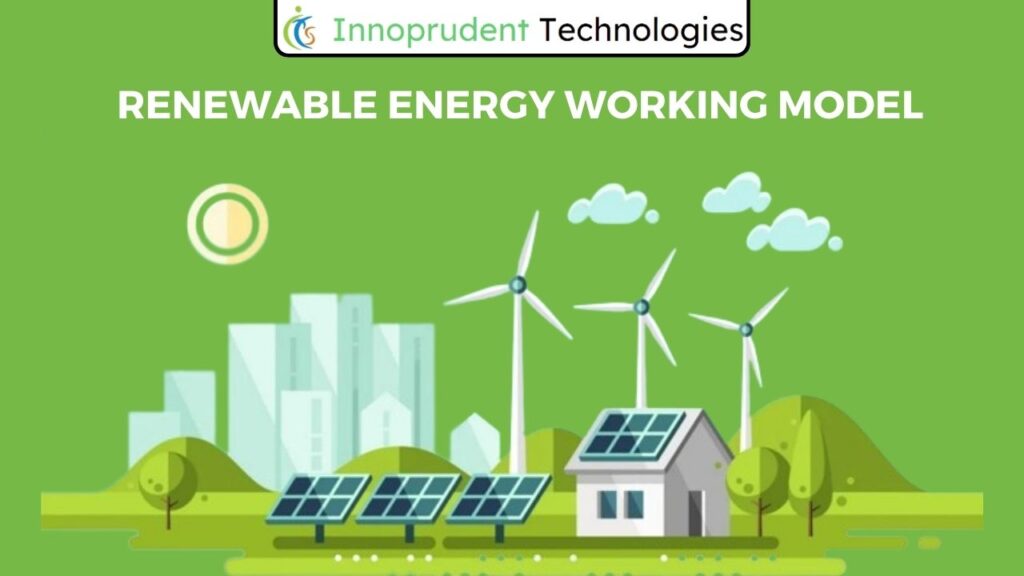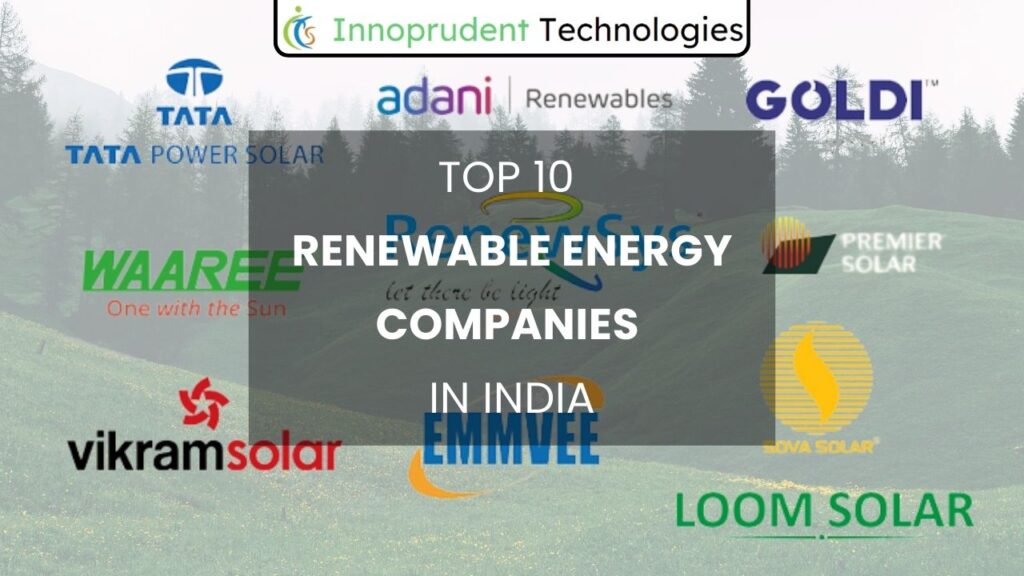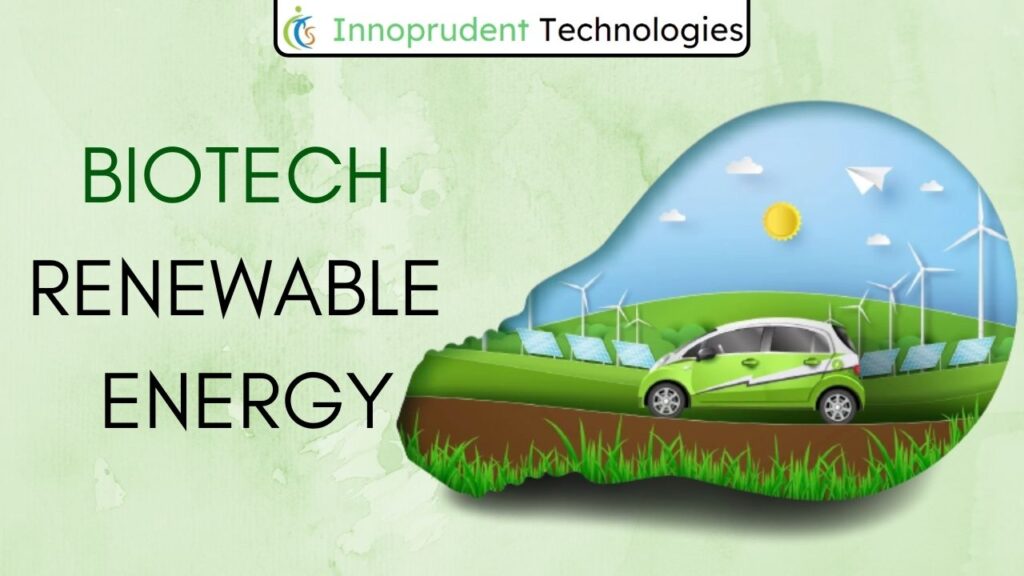Picture a world where the air is crisp and clean, where energy flows endlessly from sources that don’t harm our planet. Imagine cities powered by the gentle caress of the wind, homes bathed in the warm embrace of sunlight, and rivers whispering secrets to turbines that light up our lives.
This is the captivating world of renewable energy, where nature’s gifts are transformed into power without leaving a trace of pollution. In this article, we’ll embark on a thrilling journey into the heart of renewable energy, uncovering its secrets, and exploring the amazing working models that promise a brighter and greener future for us all.
Understanding Renewable Energy
Renewable energy, often referred to as green or clean energy, is derived from sources that are naturally replenished and have a minimal impact on the environment. Unlike fossil fuels such as coal, oil, and natural gas, which release harmful greenhouse gases when burned for energy, renewable energy sources generate power without emitting harmful pollutants. Here are some of the key renewable energy sources:
Solar Energy: Solar panels capture sunlight and convert it into electricity. This is done through the use of photovoltaic cells that harness the sun’s energy to produce clean electricity.
Wind Energy: Wind turbines, often seen in wind farms, capture the kinetic energy of the wind and convert it into electricity. As the wind turns the blades of the turbine, a generator produces electrical power.
Hydropower: Hydropower, also known as hydroelectric power, harnesses the energy of flowing water. Dams or other structures are built to control the flow of water, which is then used to turn turbines and generate electricity.
Geothermal Energy: This source taps into the Earth’s internal heat. Geothermal power plants use the natural heat from within the Earth to generate steam, which in turn drives turbines to produce electricity.
Biomass Energy: Biomass refers to organic materials such as wood, agricultural residues, and even certain types of waste. These materials can be burned to produce heat or converted into biofuels like biodiesel or ethanol.
The Working Model for Renewable Energy
Now that we understand the basics of renewable energy sources, let’s delve into a working model that showcases how these resources can be effectively harnessed to meet our energy needs.
Solar Energy
Solar energy is perhaps one of the most accessible and widely used forms of renewable energy. Solar panels, composed of photovoltaic cells, are installed on rooftops or in solar farms to capture sunlight. These cells contain semiconductor materials, typically silicon, which can generate electricity when exposed to sunlight. Here’s how the working model for solar energy production operates:
- Photovoltaic Panels: Solar panels are strategically placed to maximize exposure to sunlight. The panels consist of many individual photovoltaic cells connected in series or parallel to generate the desired voltage and current.
- Energy Conversion: When sunlight hits the solar panels, the photovoltaic cells absorb photons (light particles) and release electrons, creating an electric current. This current is direct current (DC).
- Inverter: The DC electricity generated by the solar panels is then sent to an inverter, which converts it into alternating current (AC), the type of electricity used in homes and businesses.
- Grid Connection: The AC electricity is now ready to be used. It can either power the building directly or be fed into the electrical grid, allowing excess energy to be distributed to other users or stored in batteries for later use.
- Energy Storage (optional): To ensure a consistent power supply even when the sun is not shining, energy storage systems such as batteries can be integrated into the model. These batteries store excess electricity generated during sunny periods for use during cloudy days or at night.
Wind Energy
Wind energy is another renewable resource that has gained widespread use in recent years. Large wind turbines, often arranged in wind farms, capture the kinetic energy of the wind and convert it into electricity. Here’s a working model for wind energy production:
- Wind Turbines: Wind turbines have three main components: the rotor with blades, a generator, and a tower. When the wind blows, it causes the rotor to spin.
- Energy Conversion: As the rotor spins, it drives a generator connected to it. The generator converts the mechanical energy from the spinning rotor into electrical energy.
- Inverter: Like solar energy, the electricity generated by wind turbines is typically in the form of DC. An inverter is used to convert this DC electricity into AC for use in homes and businesses.
- Grid Connection: The AC electricity can either be used locally or connected to the grid for wider distribution. Wind farms are often located in areas with consistent and strong wind patterns to maximize energy production.
- Energy Storage (optional): To address the intermittent nature of wind, energy storage solutions can be employed, similar to those used in solar energy systems. These storage systems store excess electricity for use when the wind is calm.
Hydropower
Hydropower is a reliable and well-established source of renewable energy. It harnesses the energy of flowing water to generate electricity. Here’s how the working model for hydropower production operates:
- Dam and Reservoir: In a hydropower system, a dam is constructed across a river to create a reservoir. The dam controls the flow of water.
- Turbines: As water is released from the reservoir and flows through the dam, it passes through turbines. The force of the flowing water causes the turbines to spin.
- Energy Conversion: The spinning turbines are connected to generators, which convert the mechanical energy from the moving water into electrical energy.
- Grid Connection: The electricity generated is typically in the form of AC and can be connected to the electrical grid for distribution to homes, businesses, and industries.
- Environmental Considerations: Hydropower projects must carefully consider their environmental impact, as dams can alter ecosystems and affect fish migration. Efforts are made to minimize these effects through design and mitigation measures.
Geothermal Energy
Geothermal energy taps into the heat from within the Earth to generate electricity. It is a consistent and reliable source of renewable energy. Here’s how the working model for geothermal energy production operates:
- Geothermal Reservoir: Geothermal power plants are typically located in regions with access to geothermal reservoirs, which contain hot water or steam trapped beneath the Earth’s surface.
- Drilling: Wells are drilled to access the geothermal reservoir. As the hot water or steam is released, it rises to the surface due to pressure differences.
- Energy Conversion: The hot water or steam is used to drive turbines connected to generators. As the turbines spin, they produce electricity.
- Grid Connection: The electricity generated is in the form of AC and can be connected to the grid for distribution.
- Sustainable Heat Extraction: Care is taken to manage the extraction of heat from the geothermal reservoir to ensure long-term sustainability. Sustainable practices include reinjecting water back into the reservoir to maintain pressure and temperature.
Biomass Energy
Biomass energy utilizes organic materials, such as wood, crop residues, and waste, to generate heat, electricity, or biofuels. Here’s how the working model for biomass energy production operates:
- Feedstock Collection: Biomass feedstock is collected from various sources, including agricultural residues, forest debris, and dedicated energy crops.
- Combustion or Conversion: Biomass can be burned directly to produce heat or used in combustion processes to generate steam, which can then drive turbines connected to generators. Alternatively, biomass can be converted into biofuels like biodiesel or ethanol through chemical processes.
- Energy Utilization: The heat or electricity generated can be used for various purposes, including space heating, electricity generation, or as a transportation fuel.
- Environmental Considerations: Sustainable biomass management is crucial to avoid deforestation and ensure a minimal carbon footprint. Biomass should be sourced and managed in an environmentally responsible manner.
Some More Posts
Wrapping up
The working model for harnessing renewable energy sources presents a promising path toward a more sustainable and environmentally friendly future. By tapping into the power of the sun, wind, water, heat from the Earth, and organic materials, we can reduce our reliance on fossil fuels and mitigate the harmful effects of climate change. Implementing these models on a large scale requires investments in infrastructure, technology, and policy support.
As individuals and communities, we can contribute to this transition by adopting renewable energy technologies in our homes and advocating for renewable energy policies at local and national levels. By working together, we can create a cleaner, healthier, and more sustainable world for generations to come.
FAQs
What is renewable energy?
Renewable energy is energy that is generated from natural resources that are constantly replenished, such as sunlight, wind, water, heat from the Earth, and organic materials like wood and crop residues.
Why is renewable energy important?
Renewable energy is important because it offers a sustainable and environmentally friendly alternative to fossil fuels. It helps reduce greenhouse gas emissions, combat climate change, and decrease our reliance on finite resources.
What are the main types of renewable energy sources?
The main types of renewable energy sources include solar energy, wind energy, hydropower (or hydroelectric power), geothermal energy, and biomass energy.
How do solar panels work?
Solar panels work by capturing sunlight using photovoltaic cells. These cells convert sunlight into electricity through a process that involves the absorption of photons (light particles) and the release of electrons, creating an electric current.
How do wind turbines generate electricity?
Wind turbines generate electricity by harnessing the kinetic energy of the wind. When the wind blows, it causes the turbine’s blades to spin. This motion drives a generator, which converts the mechanical energy into electrical energy.




Pingback: Harnessing the Power of Nature: The Principles of Renewable Energy - Innoprudent
Pingback: What are the Major differences between Onsite and Offsite Solar PV? - Innoprudent
Pingback: How Energy Efficiency Measures Reduce Greenhouse Gas Emissions - Innoprudent